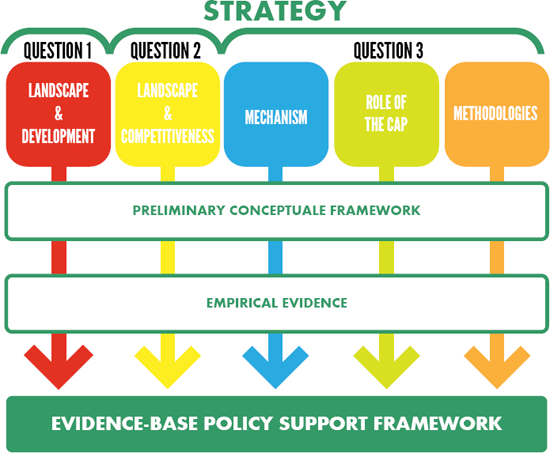About the project
Objectives
The main objective of the Project is to provide the knowledge base to support an effective CAP policy design in the direction of improved landscape management, particularly providing insights into the ability of landscape to contribute to the production of added value for society in rural areas.
This can be articulated by way of the following intermediate objectives:
- To understand the relation between agriculture, landscape features and the socio-economic development of rural areas (agrarian landscape and development)
- To explain the extent to which landscape can be considered a driver for the competitiveness of the agricultural sector in rural areas and for the creation of jobs and income in rural areas (landscape and competitiveness)
- To identify the mechanisms that explain the second-order economic impacts of landscape in rural areas (Mechanisms)
- To understand the role of the CAP in points 1, 2, 3 above, in order to contribute to developing a policy-relevant framework (role of the CAP)
- To test appropriate methodologies that can be used to measure the socio-economic second-order effects arising from the provision of landscape by agriculture (methodologies)
- To provide empirical evidence on the above issues in order to achieve a validated and practically relevant conceptual framework
- To develop a framework on the contribution of agriculture to landscape management based on the achievements of the previous objectives and able to better support policy design. This framework is aimed at valorising landscapes as public goods and maintaining landscapes for their ecological and socio-economic functions. The conceptual framework will be synthesized into guidelines for policy support
- To provide a closer integration between different EU and Candidate countries, as well as between different stakeholders and scientists in order to build a common ground for cross-country collaboration on landscape management while taking into account the variation of landscape and its appreciation across the EU territory
Strategy

The Project strategy illustrated in this figure relates directly to the CLAIM objectives by using objectives 1 to 5 as Project thematic pillars to be followed throughout the entire Project in three main steps:
- Establishing a draft framework through the identification of initial concepts, mechanisms and methods, particularly on the causal connections between landscape, rural viability, competitiveness and the CAP
- Development of an empirical analysis to support testing/validation of the preliminary framework, through targeted case studies (also addressing objective 6)
- Integration of the empirical evidence collected into the original draft framework in order to yield a finalised framework for policy support (also addressing objective 7)
These three steps will be accompanied by close stakeholders interaction and dissemination activities at both the Project and case study level, directly addressing objective 8.
Graphical presentation of the components showing their interdependencies:
